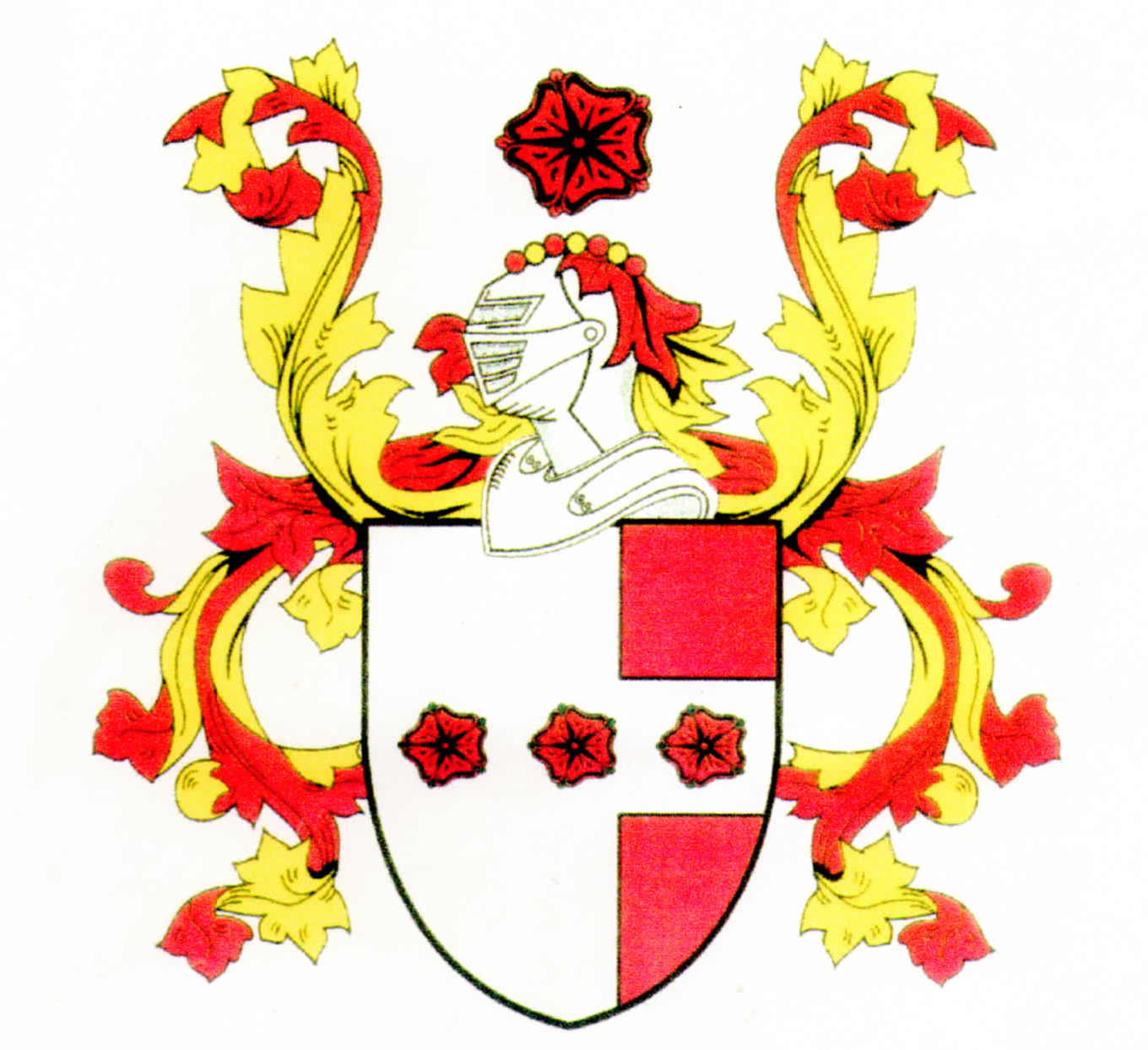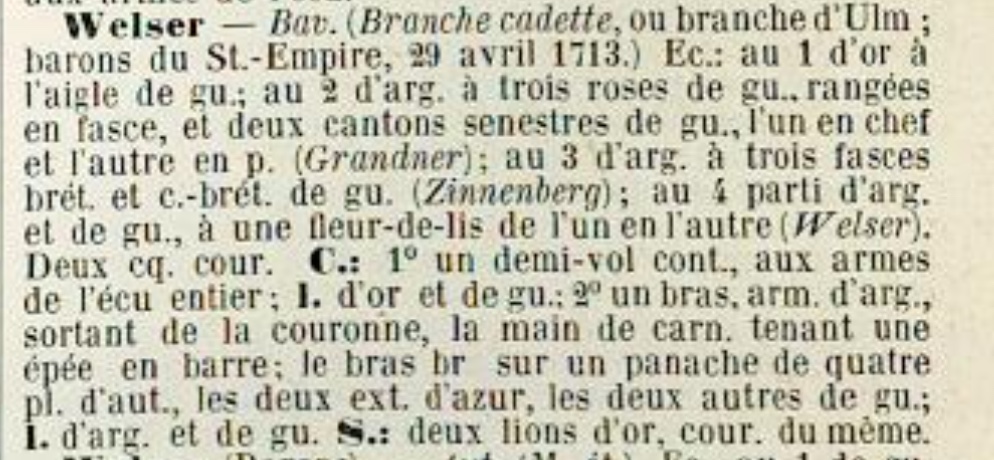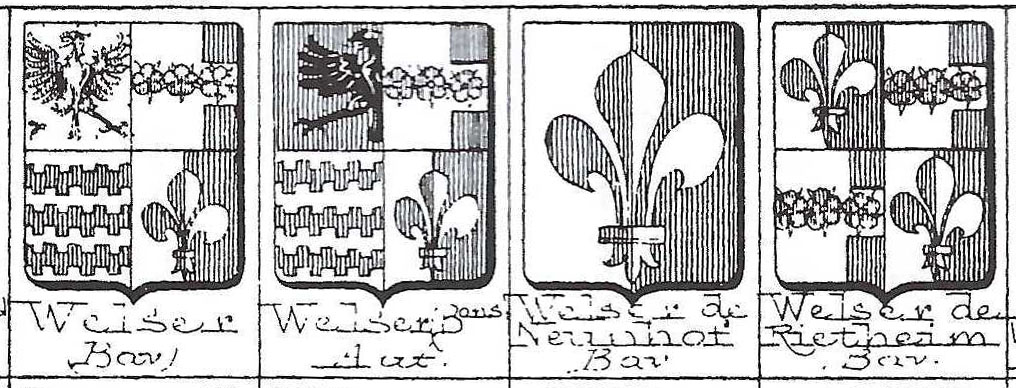
A Family Coat of Arms?
![]() Are Grandner and Grantner (Grandtner) the same surname?
Are Grandner and Grantner (Grandtner) the same surname?
Tibor Grandtner (born 1915) did considerable genealogical research and believed that "Grandner" was an early spelling of the surname "Grantner." Although that is certainly possible, I (Richard G. Grantner [born 1945]) have not yet found any evidence to verify that.
![]() An Entry in the Armorial
Général
An Entry in the Armorial
Général
The Armorial Général by Johannes Baptista Rietstap (1828-1891) is a monumental work containing the blazons of the coats of arms of more than 130,000 European families. A "blazon" is a formal description of a coat of arms from which the reader can reconstruct the appropriate image. The blazon for Grandner does not occur in the alphbetical listing where expected, on page 816 of Volume I. However, it does appear in the Supplement at the end of Volume II, on page 1253. It is given as:
D'argent à trois roses de gueules rangées en fasce et deux cantons senestres de gueules l'un en chef et l'autre en pointe.
The listing indicates that the origin of the blazon is from Tyrol. Tyrol is a historical region in the Alps; in northern Italy and western Austria. This location information is interesting. Tibor also believed that the Grantners/Grandtners/Granders were from Alsace. Alsace is a culteral and historical region in eastern France, on the west bank of the upper Rhine next to Germany and Switzerland. These two different locations seem at odds, but it depends on when the coat of arms was awarded to a Grandner. There is some DNA evidence to support Alsace as an earlier locale for Grantners.
Argent refers to the tincture (color) of the [background of
the] shield. Argent is silver or white.
Gueules is red.
Fess is a band running horizontally across the center of the shield.
Hence, "trois roses de gueules rangées en fasce"
is three red roses arranged in a band across the shield.
A canton is a square placed in the corner of the shield. A
canton is 2/3 of a quarter.
Sinister refers to the left side of the shield from the viewpoint
of the shield bearer.
The top of the shield is termed the chief and its bottom is the
base.
Hence, "deux cantons senestres de gueules l'un en chef et l'autre
en pointe" refers to the two red squares on the left side of the
shield (from the perspective of the bearer) one at the top and the other at
the base.
The other items, outside of the shield above, namely the supporters, the helm,
the coronet, and the crest, were arbitrarly added, by whoever drew the shield,
for artistic reasons.
![]() An Illustration of the Grandner Coat of Arms
An Illustration of the Grandner Coat of Arms
V. & H.V. Rolland's Illustrations to the Armorial Général (Planches de l'Armorial
Général de J.B. Rietstap:), by the Rolland father and son team,
provides illustrations to all 85,000 shields of Arms listed in J-B Rietstp's
classic Armorial Général
The blazon of Welser (from Bavaria) is shown on page 1067 of Volume 2 of the Armorial Général. It is interesting in that it incorporates the Grandner blazon. Here is the actual entry from the Armorial:
Coats of Arms and Family Crests seem cool, but here is The Real Truth Behind Coats of Arms and Family Crests.
The Coat of Arms for GRANDNER is accurately reproduced in Volume II on Plate LXXXIV.

![]() A Connection to the Welser family?
A Connection to the Welser family?
The corresponding coats of arms, as rendered in Rolland's Illustrations to the Armorial Général (Volume III, Plate CLVII), are:

Note that three of the four Welser coats of arms shown incorporate the Grandner blazon, one of them incorporates it twice.
![]() CLICK HERE to return to the Grantner/Grandtner Family Genealogy Home Page
CLICK HERE to return to the Grantner/Grandtner Family Genealogy Home Page
![]() CLICK HERE to return to the Grantner/Grandtner Family Tree Online page
CLICK HERE to return to the Grantner/Grandtner Family Tree Online page